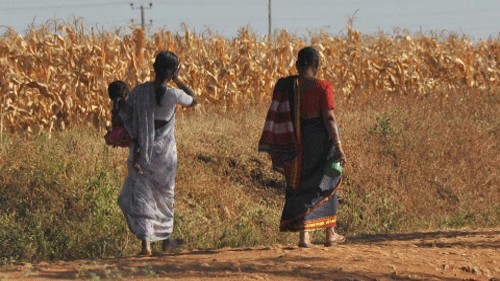
Chief economist Pranjul Bhandari cited the ongoing heat waves, pointing out that higher food and lower core inflation are coexisting because of crop damage and livestock mortality pushing up the former.
DH photo
Mumbai: Just like the post-pandemic recovery, the Indian inflation story is also 'K-shaped' and is hurting certain sections more than others, a foreign brokerage said on Tuesday.
Rural consumers are more impacted by price-rise than their urban counterparts, economists at HSBC said, adding it outstripped the urban segment by 1.1 percentage point in May, mainly due to higher food inflation.
"The same developments, driving a K-shaped recovery, seem to be driving K-shaped inflation dynamics," they said in a report.
The report by its chief economist Pranjul Bhandari cited the ongoing heat waves, pointing out that higher food and lower core inflation are coexisting because of crop damage and livestock mortality pushing up the former.
The government lent a helping hand by cutting several fuel prices but many of the fuels like petrol, diesel and LPG are not commonly used in rural areas, like they are in urban centres, leading to rural inflation being much higher than urban, it said.
The report noted that food inflation dynamics are more "mysterious" because ideally, one would think that rural areas growing the food should suffer less than the urban pockets.
It explained that because farmer incomes are hurt, they are making more effort to sell food to urban procurers, where the return may be higher, leaving a shorter supply in their areas that leads to higher prices.
Also, the urban areas have the benefit of a better port-to-fork infrastructure, which helps in the prices of imported items being lower, it said.
The brokerage said that if the rains do not pick up, there is a risk of the RBI not easing the rates at all.
"If rains don't normalise over July and August, the resultant food stress of 2024 could arguably be worse than in 2023, given low stocks of wheat and pulses in the granaries," it said.
So far in June, rains remain 17 per cent below normal with the northwest region, which grows most of India's cereal, having a 63 per cent deficit.
If the rains normalise, inflation could fall sharply, and the RBI may be able to cut rates, it said, adding that this can trigger the base case expectation of a 0.5 per cent rate cut by March 2025.